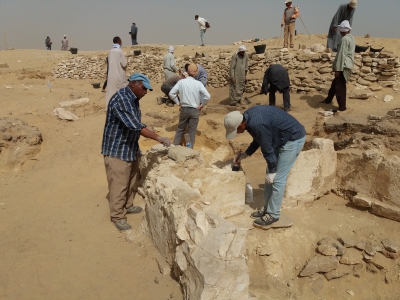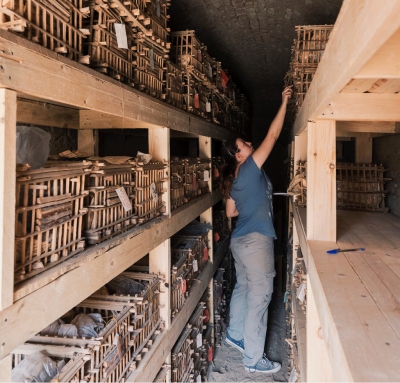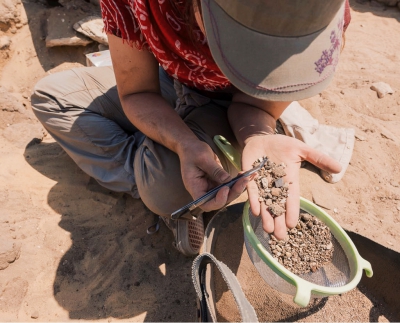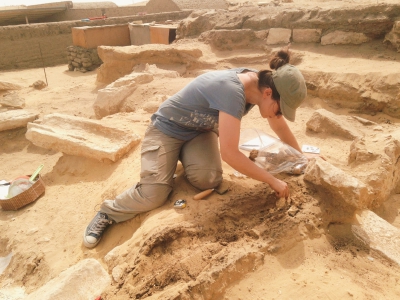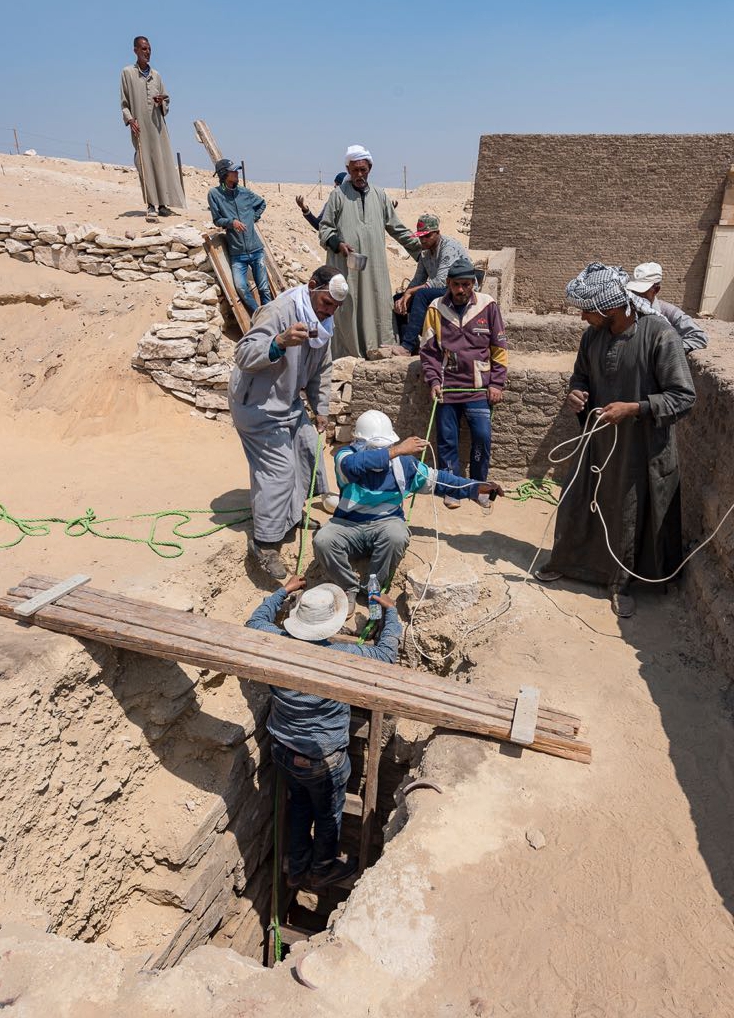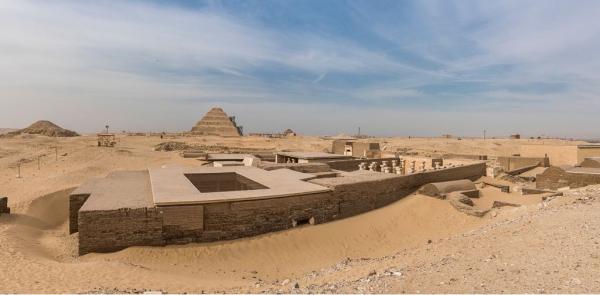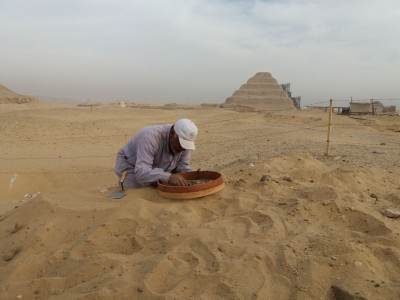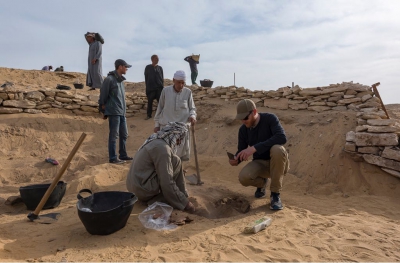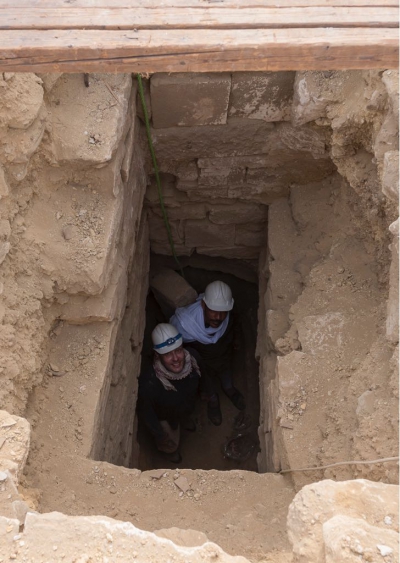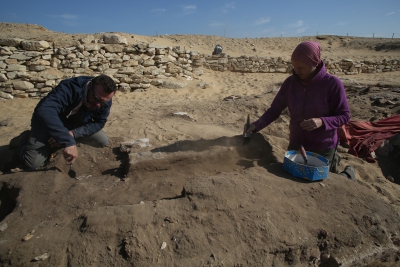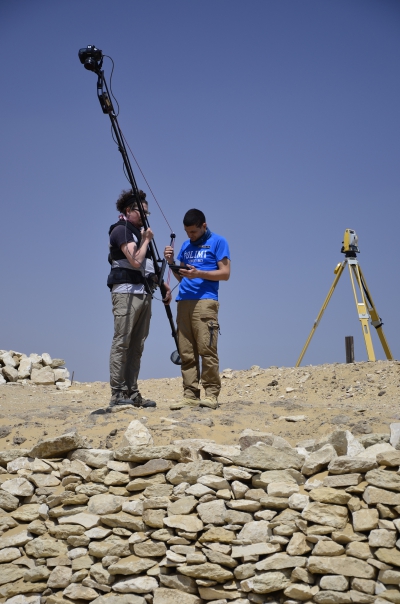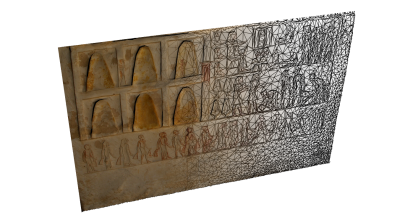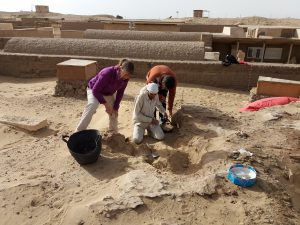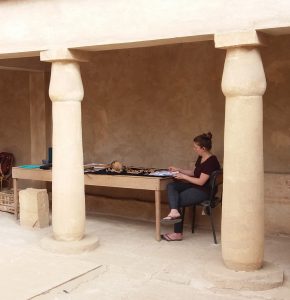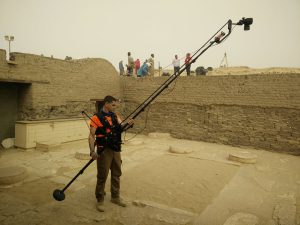Digging Diary 6: 21.04 – 27.04.2018
Final Digging Diary 2018 (by Lara Weiss & Christian Greco)
After Turin joined our excavations as a partner in 2015, Christian and Lara look back to this first year of their Leiden-Turin excavations directed by the two of them together.
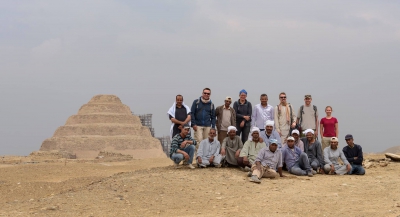
So that was it for 2018. After a wonderful season, we closed the site today, 25 April.
We find it extremely important to dig slowly and carefully, understand the stratigraphy, and document the whole area – which means literally everything we find – as carefully as possible. For this task, we are very lucky to have found the 3D Survey Group from Politecnico di Milano willing to survey the concession and the ongoing excavations. With their new, ground-breaking method to create 3D models and orthorectified 2D images, we can now document every step of the excavations and ‘undo’ the destruction usually caused by archaeology.
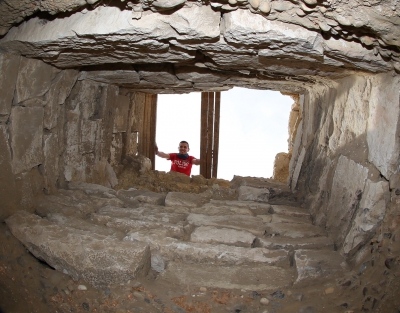
Deep in the ground: photo taken from inside a tomb shaft, four meters under ground level. Alessandro Mandelli is checking the situation. (3D Survey Group, Politecnico di Milano)
The information will soon be uploaded in a new Saqqara information system, which will be an extremely useful tool – not only during the recording phase in the field but also, at a later stage, to re-elaborate the information, share it with pottery, human remains, wood or architecture specialists in a collaborative environment, and disseminate it to the wider public. We thank Prof. Corinna Rossi and her team (Francesco Fassi, Alessandro Mandelli and Luca Perfetti) for their kind cooperation, and also for their great company and friendship in the past six weeks.
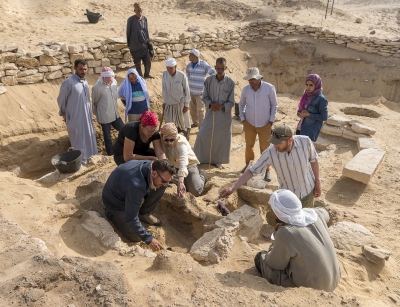
A new chapel emerges from the sand.
We are very pleased with our pottery team: Barbara Aston, who has been working with the expedition since 1986, the year of the discovery of the tomb of Maya and is now finalising an important book on the pottery coming from that tomb; Lyla Pinch Brock, who has been helping Barbara and drawing lots of beautiful pots; Valentina Gasperini, assisted by Alice Salvador, who is studying the pottery coming in great quantity every day from the excavation area to the north of the tomb of Maya. The help of a new team member, Nicola dell’Aquila, photographer of the Turin Museum, has been essential for the documentation of the various artefacts we have found.
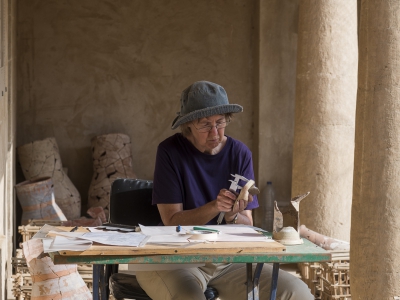
Our pottery specialist Barbara Aston at work.
Apart from new methods, we also have new questions that aim at a broader understanding of the site beyond the excavation and documentation of individual tombs. We would like to understand how our concession area functioned over the centuries. As to the pharaonic period: who decided to build his tomb where and why? Which wall decoration schemes were chosen? Which religious activities were performed? But also later, how was the area reused? By whom? And with what purpose? To help answer these questions, our excavations are currently also funded by the Dutch Organisation for Scientific Research (NWO) as part of a research project called ‘The Walking Dead at Saqqara: The Making of a Cultural Geography’, supervised by Lara Weiss.
For this project, the area the Leiden-Turin team is currently excavating is particularly interesting, because it is an area in-between larger tombs where we can detect the activities of the ancient Egyptians over several millennia. In the New Kingdom, roughly around 1200 BCE, three very nice small limestone burial chapels were built in front of related burial shafts leading to subterranean burial chambers. The burials of the Late Period, in the 5th and 6th centuries BCE, were often accompanied by so-called embalmers’ caches, in which the used mummification materials of the burials of that time were placed (and sometimes burnt).
Yet again 6 or more centuries later, the Late Antique population lived here near the Monastery of Apa Jeremias, sometimes burying their children under the floor. Deputy director Paolo Del Vesco and archaeologists Miriam Müller, Nico Staring, Sarah Schrader and Jelene Ali Scheers have uncovered and documented every layer, and retrieved digging activities in the 19th century. It shows that the treasure hunts at that time were timely organized and systematic. We found three pits at equal distances from each other, of which the third one still had a 19th century basket inside.
At the end of the season it is time not only to thank our awesome team from Leiden-Turin, but also our Egyptian workmen for their hard work and enthusiasm, our Egyptian colleagues for their assistance and support, and last but not least our cooks Atef and Islam for taking good care of us in the dig house.
This was an amazing season, and we are greatly looking forward to 2019!
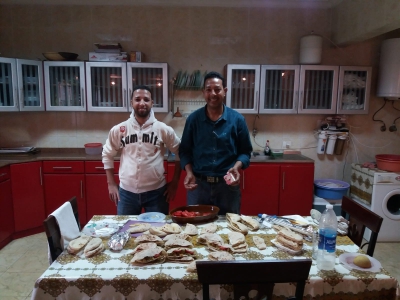
Our cooks Atef and Islam.
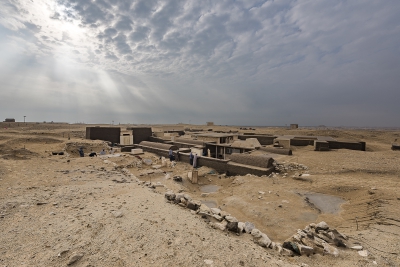
Overview over the site at the end of the season.


